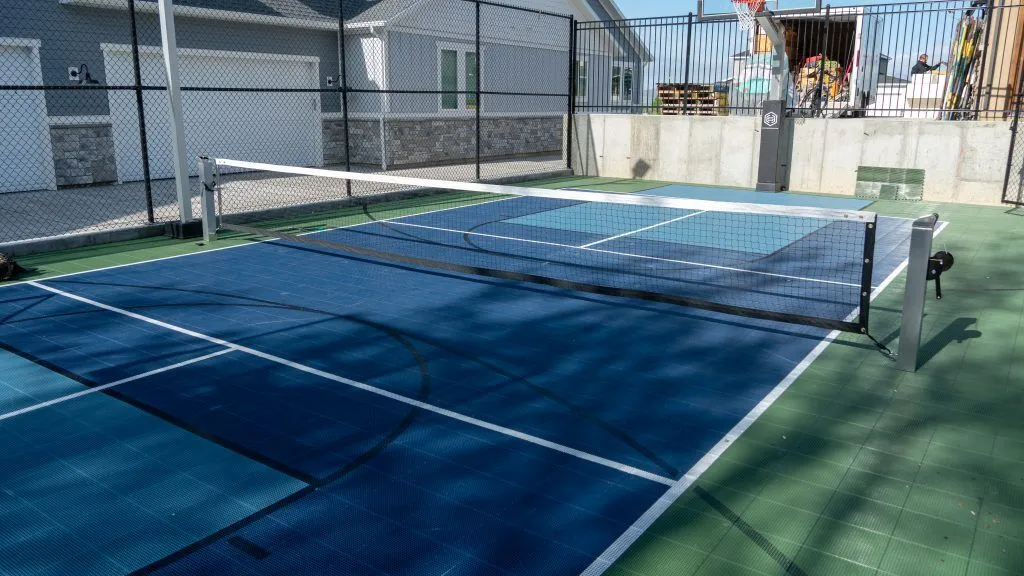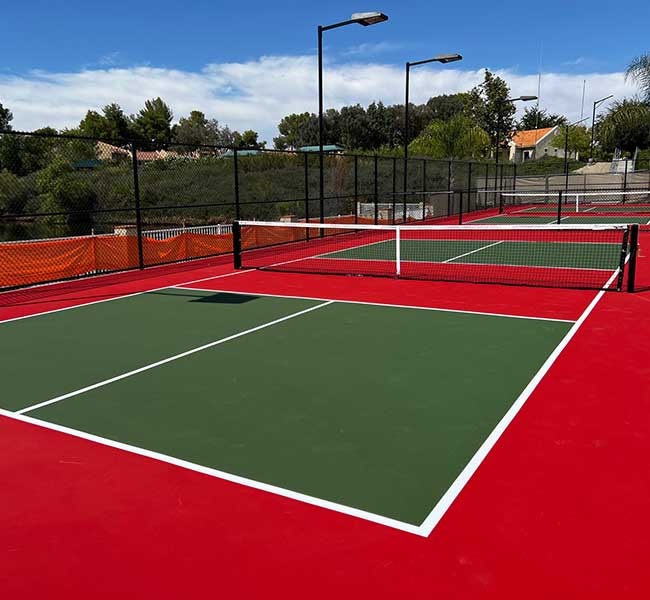Constructing a Pickleball Court Construction-- Professional Construction for Quality Play
Constructing a Pickleball Court Construction-- Professional Construction for Quality Play
Blog Article
Sustainable Practices in Pickleball Court Building And Construction You Ought To Know
As the appeal of pickleball continues to rise, so also does the requirement for sustainable techniques in court building and construction. The influence of these practices prolongs far past the court itself.
Choosing Eco-Friendly Materials
Picking eco-friendly materials is a vital step in the building and construction of sustainable pickleball courts. The option of sustainable materials not just decreases environmental effect but likewise improves the durability and performance of the court. Secret materials include recycled rubber for the surface area, which offers excellent durability and shock absorption while drawing away waste from land fills.
Furthermore, using locally sourced products minimizes transport emissions and supports regional economic climates. Pickleball court construction. For example, making use of native hardwoods for secure fencing and seating can provide a sustainable visual while ensuring strength against the components.
Integrating absorptive materials for court foundations can even more add to sustainability by permitting all-natural water drain and reducing overflow. These selections not only secure neighborhood ecological communities however additionally promote much healthier play environments.
Effective Water Drainage Solutions
While the selection of environmentally friendly materials is crucial, executing effective drain solutions is similarly important for keeping sustainable pickleball courts. Proper drain not just protects the court surface from water damage however additionally minimizes erosion and overflow, promoting ecological honesty.
Reliable drain systems can consist of absorptive paving, which permits water to infiltrate the ground instead of pooling on the surface. This reduces the probability of standing water, which can result in mold and other upkeep concerns. Furthermore, integrating tactically placed drainage networks and swales can guide excess water away from the court area, ensuring a completely dry playing surface and protecting against dirt disintegration.
Making use of native vegetation in the landscape design around the courts can better improve drainage by soaking up excess water and lowering runoff. These plants call for much less irrigation and promote biodiversity, lining up with sustainable practices.
Moreover, it is vital to consistently preserve the drainage system to ensure its lasting effectiveness. This includes cleaning particles and tracking for blockages. By prioritizing reliable water drainage solutions, pickleball court erectors can dramatically add to the sustainability and long life of the facility, inevitably benefiting both gamers and the environment.
Energy-Efficient Lighting Options
As the need for pickleball continues to grow, integrating energy-efficient lighting alternatives into court design has ended up being significantly vital for sustainability. Traditional lights systems commonly take in too much energy, contributing to greater operational costs and environmental influence. As a result, adopting contemporary, energy-efficient technologies is necessary for both brand-new buildings and renovations.
LED (Light Emitting Diode) lights stands out as a leading choice as a result of its long life and power savings (Pickleball court construction). Contrasted to conventional illumination, LEDs utilize around 75% less energy and can last approximately 25 times much longer, dramatically minimizing maintenance costs. The directional nature of LED lights reduces light pollution, making sure that illumination is concentrated on the court rather than bordering locations.

Sustainable Surface Alternatives
Discovering sustainable surface choices for pickleball courts has acquired grip among home builders and gamers alike. The focus on eco-friendly materials not just straightens with the growing environmental awareness yet also boosts the performance and longevity of the courts.
This product supplies excellent shock click to read absorption, reducing the threat of injuries for gamers while promoting sustainability. These tiles are very easy visit the site to set up and replace, and their adaptability enables for various court arrangements.
All-natural grass courts are likewise becoming a sustainable selection, promoting biodiversity and minimizing the warmth island impact. Nonetheless, they require routine upkeep and water, which may not line up with all sustainability objectives.

Water Conservation Techniques

Another reliable strategy involves the installment of rain harvesting systems. These systems collect and store rainwater for usage in maintaining court surfaces and landscaping. This strategy not just saves potable water however additionally minimizes dependence on local resources.
Furthermore, using drought-resistant landscape design around the courts is crucial. Native plants need much less water and are much better adapted to regional environment conditions, therefore lowering total water consumption. Furthermore, making use of efficient irrigation systems, such as drip irrigation, makes sure that water is supplied straight to plant origins, minimizing evaporation and waste.
Final Thought
Including lasting techniques in pickleball court construction considerably contributes to environmental conservation and source effectiveness. Using eco-friendly materials, carrying out reliable drainage options, and taking on energy-efficient lights choices can substantially minimize environmental effect. Discovering lasting surface choices and employing water preservation methods boost the general sustainability of these recreational centers. By prioritizing these techniques, the building of pickleball courts can straighten with wider ecological goals while advertising longevity and capability within areas.
As the appeal of pickleball proceeds to rise, so too does the requirement for lasting techniques in court building and construction.Choosing environmentally friendly products is an essential step in the building of sustainable pickleball courts. By focusing on energy-efficient illumination choices, pickleball court erectors can add to an extra sustainable future while fulfilling the demands of gamers and stakeholders alike.Incorporating sustainable surface area choices not just improves the performance of pickleball courts but likewise paves the means for carrying out efficient water conservation strategies.Including sustainable techniques in pickleball court building and construction substantially adds to ecological conservation and source effectiveness.
Report this page